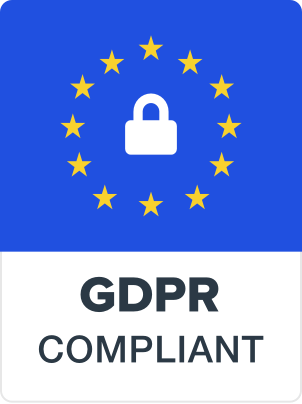Improving Infection Control for Safer Nursing Homes

April 18 , 2024
According to CDC estimates, healthcare-associated infections (HAIs) affect 1 in 43 nursing home citizens and 1 in 31 hospital patients daily.
In nursing homes, where residents are among the most susceptible to infections because of their advanced age, underlying medical conditions, or both, infection control is of the utmost importance.
An all-encompassing strategy is needed for infection control in nursing homes, one that takes into account resident and staff education, facility design, staffing levels, and resource management.
A multidisciplinary strategy is needed to address nursing homes’ obstacles to implementing infection prevention and control (IPC) procedures.
Implementing IPC measures requires using an infection control audit tool specifically designed for nursing homes, following CDC infection control guidelines, and encouraging a safety and awareness culture among all parties involved.
This blog will support nursing homes in reducing the crack between best practices and routine operations to ensure patient safety and regulatory compliance.
To handle these, a new tech in app form roams the virtual world called “UrAudits.” We will also discuss this home care inspection app here.
How Do HAIs Spread and What Do They Mean?
Hospital-associated infections (HAIs) are dangerous infections. They arise from illnesses that individuals contract while receiving care in hospitals. Bacteria, viruses, or fungi are the sources of HAIs. They could be fatal or just moderate. Millions of people fall ill in nursing homes and other care facilities every year.
HAIs come in a variety of standard kinds and frequently have linked with medical or surgical operations as well as the usage of medical devices. Among them are:
- Central line-associated bloodstream infections (CLABSIs)
- Catheter-associated urinary tract infections (CAUTIs)
- Ventilator-associated pneumonia (VAP)
- Surgical site infections (SSIs)
Numerous pathogens, such as bacteria, viruses, and fungi, can result in HAIs. A likely 1 to 3 million infections take place annually in skilled nursing facilities, living institutions, and nursing homes.
In what ways do these illnesses propagate? It consists of three primary parts:
The source comes first. The germs originate from here. They could be in the surroundings or people, such as employees or patients.
And there’s the vulnerable one. This person is susceptible to illness. The elderly and those who have just had surgery are examples of people with weakened immune systems who are more vulnerable to infections.
Transmission is the last method by which germs spread among individuals. Touch, air, or blood can all cause it to occur.
Infections can spread quickly in nursing homes. Visitors, employees, and residents can all transfer germs, so it’s critical to take precautions against infections.
Obstacles in Infection Prevention and Control for Nursing Homes

The prevention of infections in nursing homes is challenging. In the US alone, 16,000 facilities house over 1.5 million residents, so the stakes are very high. These locations encounter over 2 million infections a year, which causes serious health issues and exorbitant medical expenses.
The lack of employees is a significant obstacle. The key to infection control is having a sufficient workforce.
However, scarcity is a problem in many areas, making prevention strategies challenging. Turnover and a lack of specialized training impede staff’s ability to receive infection control training. These issues were more severe during COVID-19 as infection risks and demand surged.
The complexity of nursing homes’ layouts gets higher. Specific designs pose challenges in maintaining cleanliness, controlling airflow, and isolating sick occupants. Germs proliferate in shared spaces and rooms.
There are further difficulties because of scarce resources. Essentials include things like gloves, hand sanitizer, and cleaning supplies. However, limited funding may make it difficult to get essential supplies, leaving healthcare facilities unprepared to handle infection concerns.
An Audit Instrument for Infection Prevention in Nursing Homes

It can be difficult to implement CDC infection control guidelines. Consistency is an issue because procedures differ between staff members and shifts. Manual data entry takes time and is inefficient for proactive problem-solving, while paper checklists are cumbersome and prone to mistakes. The UrAudits inspection application is a practical solution.
It makes infection prevention and control in home health, long-term care, and nursing home settings simpler in the following ways:
- Employees can use their phones to log findings and conduct inspections directly.
- Monitoring remedial action guarantees quick problem-solving.
- Follow-up is streamlined by designating tasks to particular employees and establishing reminders.
- Trends and areas for improvement can be found by analyzing audit data.
- Include IPC audits in a program digitally managed on a single platform that combines internal audits with care quality.
With UrAudits, you can;
- Bridge the gap between best practices and routine behavior to ensure proactive and regular adherence to CDC infection control standards
- Give your employees the freedom to focus more on resident care and less on paperwork, freeing up significant time for the kind of human connections that count most.
- Conduct routine audits with precise documentation to show your dedication to resident safety and assist you in meeting all regulatory standards.
CDC Guidelines for Infection Control
Our large collection of healthcare checklists might help you streamline audits. Our care home inspection app handles everything, including terminal cleaning and staff hygiene. Our CDC-aligned solutions can help you streamline your auditing procedure. Want a personalized checklist? We also take care of that at no additional expense.
Use our Terminal Cleaning Checklist to guarantee meticulous cleaning practices. This checklist, made per CDC requirements, ensures that patients are in a safe environment by thoroughly cleaning rooms after each use.
An employee hygiene audit for infection control can include every aspect, including staff education and hand hygiene. Use this thorough checklist to ensure the safety of both patients and personnel in your healthcare facility.
Utilize Infection Control Compliance 1 Checklist to perform routine infection control inspections. This checklist guarantees adherence to infection control guidelines and hygiene requirements in restrooms and sluice rooms.
Use Infection Control Compliance 2 Checklist to stop wounds and infections. This checklist, which includes staff training and sharps disposal, focuses on reducing the risks associated with blood and bodily fluids.
Are you seeking to raise the standard of service and patient contentment in assisted living facilities? Our care home inspection app can assist with selecting nursing audits and pharmaceutical audit checklists.
Our inspection app provides everything you need to succeed, from staff training to hand hygiene.
What are CDC’s 2-Tier Precautions?
The CDC has established a two-tiered infection control plan for nursing homes and healthcare facilities. By addressing both general and specific infection threats, it aims to maintain people’s health.
The first is Standard Precautions for All. Whether a patient is ill or not, this entails applying common-sense procedures and donning protective gear like masks and gloves.
Next, there are precautions based on transmission (TBPs). These are additional precautions for individuals suspected or confirmed to have a certain infection. Three varieties of TBPs are available: contact, Droplet, and Airborne.
For instance, precautions are taken against airborne infections such as measles and tuberculosis. This implies that medical personnel may be required to use N95 respirators and specialized masks and that patients may be placed in separate rooms.
It’s all about keeping everyone safe and healthy!
So, safeguard your nursing home or healthcare facility with our advanced inspection app for iOS and Android!
Download our care home inspection app now!
Guidelines for Safe Healthcare Delivery in Infection Control by the CDC

The CDC maintains fundamental standards of care through infection prevention and control measures chosen from its current recommendations. These practices are not often modified. Let us examine the fundamental components of these strategies.
Support for Leadership
All tiers of the healthcare leadership must firmly support infection prevention initiatives. This includes allocating sufficient resources to address infection threats and designating competent personnel to hold the reins. Running a program that adheres to established rules and functions well requires expertise in infection prevention.
Healthcare Personnel Education and Training
Infection prevention training for healthcare personnel must be comprehensive. To keep their knowledge current, they require on-the-job training upon starting work as well as periodic refreshers. By being informed about emerging infection concerns, they can modify their procedures.
Patient Education for Families and Caregivers
Patients, families, and caregivers should also understand infection prevention. Clear, understandable information regarding the transmission of infections, when to seek medical attention, and preventative measures can facilitate collaboration on infection control. It is important to adapt information to suit various linguistic, cultural, and educational backgrounds.
Performance Evaluation and Comments
Adherence to infection prevention protocols must be monitored. Implementing changes is faster when leaders and employees receive prompt feedback. Uniform criteria and instruments ensure that measurements are made consistently by all parties.
Common Safety Measures

No matter what, following basic infection prevention guidelines is crucial. Hand washing, maintaining hygiene, handling medications securely, donning protective gear when necessary, and verifying that medical equipment is safe to use again are a few of these. These precautions prevent illnesses from spreading to other patients, staff members, and the surrounding area.
Enhance your healthcare facility’s infection prevention efforts with our inspection app for Android and iOS devices.
Download this care home inspection app to build up your infection control program and safeguard your patients, staff, and community.
What is the Role of the International Infection Control Branch (IICB) in Infection Control?
The International Infection Control Branch (IICB) is a key player in global efforts to control infections. Its focus is on protecting patients and healthcare workers worldwide, especially in areas with fewer resources.
Their main job is to create and promote standards and practices for preventing and controlling infections in healthcare settings.
They also help strengthen surveillance and prevention networks by connecting programs that monitor healthcare-associated infections (HAIs) and antibiotic resistance (AR) on local, national, and global levels.
When outbreaks happen in healthcare settings, the IICB steps in to help prepare and respond. They also create training materials to teach healthcare workers how to effectively use infection prevention and control (IPC) measures.
Ready to step up your infection prevention and control game? UrAudits healthcare inspection app can help nursing homes ensure they follow CDC infection control guidelines.
With this home care inspection app, nursing homes can improve their infection control processes and focus on what matters: taking care of patients.
Copyright © 2024 Uraudits.com. All Rights Reserved. Privacy Policy | Legal | Terms of Use
Privacy Overview
| Cookie | Duration | Description |
|---|---|---|
| cookielawinfo-checbox-analytics | 11 months | This cookie is set by GDPR Cookie Consent plugin. The cookie is used to store the user consent for the cookies in the category "Analytics". |
| cookielawinfo-checbox-functional | 11 months | The cookie is set by GDPR cookie consent to record the user consent for the cookies in the category "Functional". |
| cookielawinfo-checbox-others | 11 months | This cookie is set by GDPR Cookie Consent plugin. The cookie is used to store the user consent for the cookies in the category "Other. |
| cookielawinfo-checkbox-necessary | 11 months | This cookie is set by GDPR Cookie Consent plugin. The cookies is used to store the user consent for the cookies in the category "Necessary". |
| cookielawinfo-checkbox-performance | 11 months | This cookie is set by GDPR Cookie Consent plugin. The cookie is used to store the user consent for the cookies in the category "Performance". |
| viewed_cookie_policy | 11 months | The cookie is set by the GDPR Cookie Consent plugin and is used to store whether or not user has consented to the use of cookies. It does not store any personal data. |









